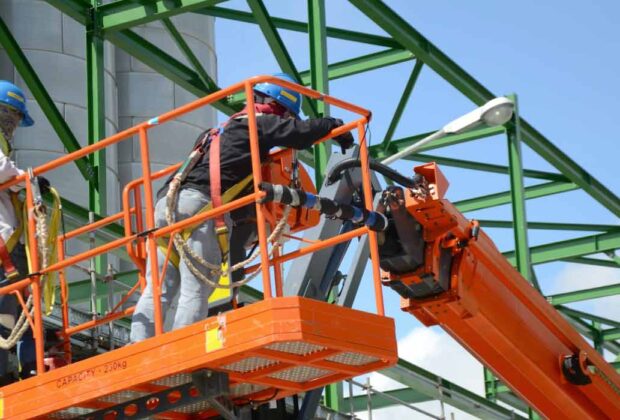Written by Terry Becker, P.Eng., CESCP, IEEE Senior Member
Arc flash should not be your priority!!
What I see happening in the industry across Canada and the USA in the last 3-5 years is complacency in electrical safety.
“No electrical incidents occurring so we don’t need to do anything else than what we have done e.g. incident energy analysis study and Equipment Labels installed, bought some arc flash PPE and we trained the electricians 3-5 years ago so we are compliant.”
“We don’t need to update our Electrical Safety Program it is based on the 2012 Edition of CSA Z462 and is still valid.”
“We just need an Arc Flash Program.”
One of the challenges of these types of statements as a defence in court is that the applicable industry Standard for Canada, CSA Z462 changes every three (3) years, the same for NFPA 70E in the USA. Your company’s policies, practices and procedures for electrical safety and energized electrical work should also be updated every three (3) years and align with the latest Edition of the CSA Z462 Standard for the most effective and defendable due diligence if your company every does have an electrical incident.
Implementing and auditing a compliant Electrical Safety Program should be your first priority as outlined in CSA Z462 Clause 4.1.6 Electrical safety program. This would also align with expected due diligence by the OH&S Regulator in Canada and the USA. The Certificate of Recognition (COR) for Provinces also validates the importance of development, implementing and auditing an Occupational Health & Safety Management System (OHSMS). In the case of arc flash and shock hazards, this OHSMS is a specific Electrical Safety Program that works complimentary with your overall OHSMS for all workplace hazards.
Additionally, the electrical hazard of shock should be identified and treated with equal if not a higher priority with respect to hazard identification against energized electrical work tasks and the implementation of additional protective measures than arc flash. Statistically in North America (and I am sure Internationally) shocks leading to electrocution results in 99% of electrical incident fatalities.
I have communicated in the past that employers are blindsided by non-compliant “arc flash awareness” or “arc flash training” that only focuses on the arc flash hazard and neglects the shock hazard, uses fear-based training with a lot of videos and storytelling and miss information and doesn’t include any training content on completing a risk assessment procedure for energized electrical work.
Other myths and miss information continue to propagate throughout industry across Canada and in some specific Provinces such as Ontario:
- It is illegal to perform energized electrical work.
- Working on electrical equipment with an incident energy >40 cal/cm2is “Dangerous” and “No PPE Exists.”
- Operating energized electrical equipment requires arc flash PPE to be worn.
- Arc flash PPE is identified with a Category # that replaces the HRC #.
- “I am the CEO and I issued a policy to all of the electricians that work for me that we don’t work live!” “We do not need an Electrical Safety Program.”
- We need an “Arc Flash Program. We are going to hire an engineer to do the calculations and provide us with Equipment Labels, this is our Arc Flash Program.”
- “We bought arc flash PPE and sent the electricians on training, our due diligence is good. The Supervisor didn’t have time and didn’t attend the training.”
Common gaps related to an Electrical Safety Program are;
- NO documented purpose, principles, a scope for energized electrical work.
- NO documented Roles & Responsibilities for energized electrical work.
- NO documented process for completing the required Risk Assessment Procedure.
- NO documented policies for energized electrical work (e.g. Establishing an Electrically Safe Work Condition, use of EEWP, working alone, no jewelry policy, look-alike equipment, alertness, housekeeping, confined spaces, a requirement for GFCI, etc..).
- No documentation related to the specification, procurement, inventorying, issuing individually or shared, pre-use inspection, care, use and maintenance of Electrical Specific PPE, Tools & Equipment.
- NO documentation defining electrical safety training and who should receive it and when (e.g. no Electrical Safety Training Matrix).
- NO documentation related to electrical incident reporting policy and management.
- NO documentation related to emergency response to an electrical incident.
- NO documentation for the management of contractors.
- NO documentation defining audit requirements and an Internal Electrical Safety Audit Process.
- NO documentation with respect to formal Management of Change process for energized electrical equipment.
- Electrical safety competency is not validated.
- NO formal compliant Electrical Safety Program that includes the requirements listed above.
My concern is the employer has a false sense of security believing they have adequate due diligence when in reality all they have is Equipment Labels and arc flash PPE.
Unfortunately, I have been involved in several electrical incident investigations. With respect to documentation in most cases, there was nothing or there was documentation that was not a compliant Electrical Safety Program. There was a lack of field-based electrical safety documentation that was completed and signed by the Qualified Electrical Worker before they proceeded with energized electrical work. There was no risk assessment completed. In some cases, this resulted in a fatality.
Establishing a compliant Electrical Safety Program and ensuring it is audited on a regular frequency (e.g. Internal Electrical Safety Audit annually and External Electrical Safety Audit at least every 3 years) will ensure your company has measurable, sustainable and defendable due diligence. If you have no documentation or documentation that is not complete or compliant your company, managers, supervisors and workers are at risk of OH&S oversight if an electrical incident occurs.
To the positive benefit of your worker’s risk please follow up and ensure your documentation is appropriate, up-to-date and valid. In the end, it is all about the worker going home safe!!
Please submit any questions or comments you may have to Kevin Buhr and Terry Becker, P.Eng., CESCP, IEEE Senior Member via email, kevinb@electricalline.comand tbecker@danatec.com.
About Terry Becker, P.Eng., CESCP, IEEE Senior Member
Terry is the first past Vice-Chair of the CSA Z462 Workplace electrical safety Standard Technical Committee and currently a Voting Member and Working Group 8 Leader, Annexes. Terry is also a Voting Member on the IEEE 1584 Technical Committee and a Voting Member of the CSA Z463 Maintenance of electrical systems Standard (2018). Terry is a Professional Engineer in the Provinces of BC, AB, SK, MN and ON. Terry is Senior Vice President, Electrical Safety at Danatec Educational Services Ltd. www.danatec.com1-403-465-3366 providing electrical safety consulting (e.g. audits and ESP development), licensed Electrical Safety Program development and implementation, and arc flash & shock training solutions.



Comments are closed.